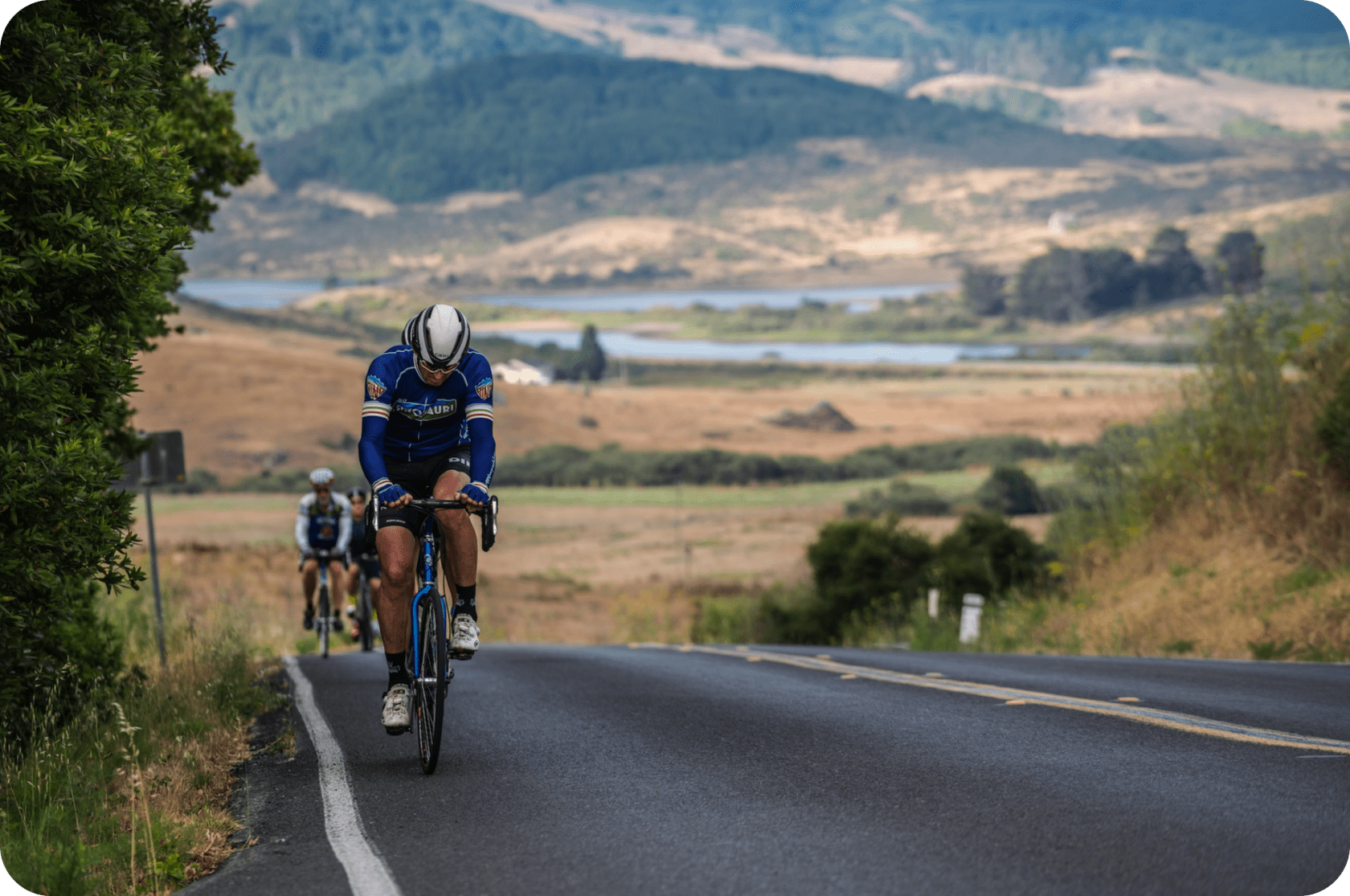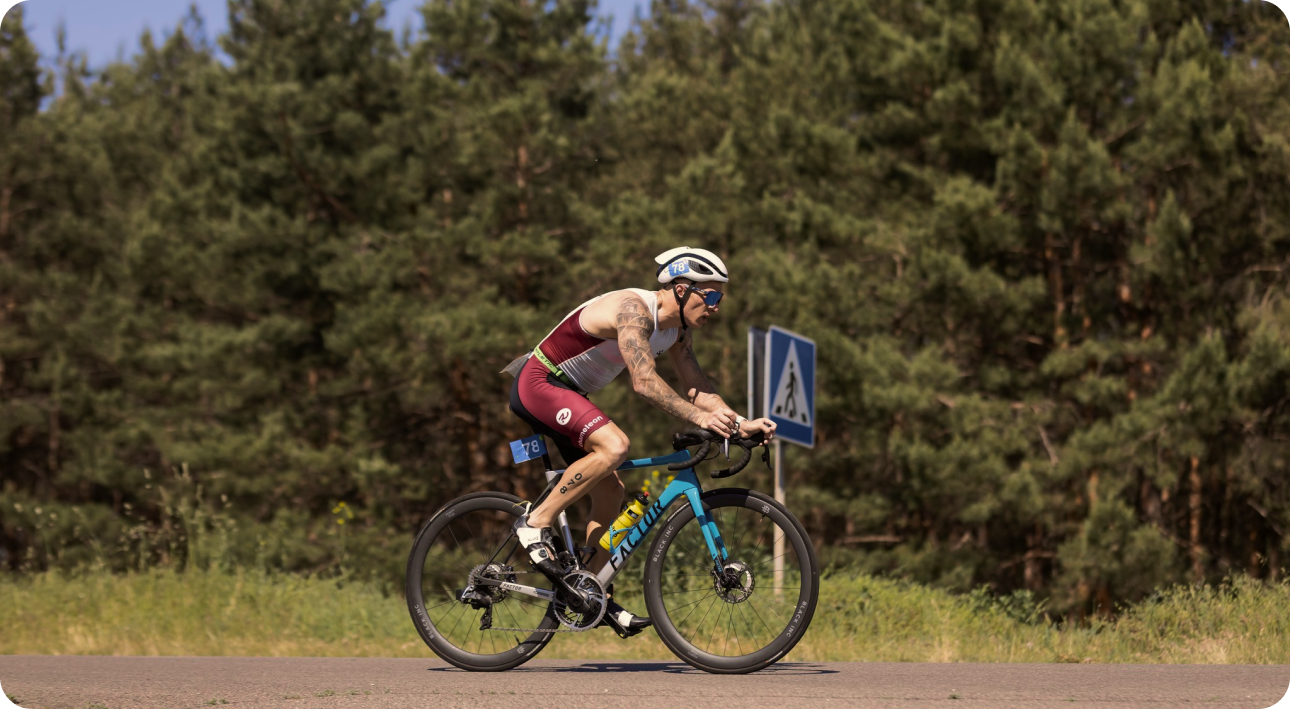The Achilles tendon is a common area for pain, injury, and inflammation, particularly for athletes and runners. Achilles tendinopathy is particularly common among elite athletes. Studies show that this issue affects 12%–24% of long-distance triathletes, like those competing in Ironman races, compared to their Olympic distance counterparts. While it can be painful and miserable, with the right exercises, you can strengthen your Achilles tendon and prevent future injuries.
Here, I will dive deeper into what the Achilles tendon is and how injuries usually happen. After that, I will share some of the best exercises for stretching and strengthening the Achilles tendon.
What is the Achilles Tendon
Your Achilles tendon attaches your calf to your heel bone. It is the thickest tendon in the human body, with the ability to resist large tensile forces.
Every time you take a step, your calf muscles pull the tendon, which snaps your foot downward to propel you forward. It’s doing almost all the work (about 93% of the force!) when you push off the ground. Without it, you’d shuffle like a zombie instead of walking smoothly, and jumping would feel impossible.
This whole system is why athletes rely so much on strong calves and a healthy Achilles. It’s the secret behind speed, power, and even just getting around without pain. If it’s weak or injured, even simple movements become a struggle. But when it’s working right, you barely notice it; it’s just your body’s natural way of keeping you moving effortlessly.
Also, these motions exert the greatest load on the Achilles tendon, with tensile loads up to about ten times the body’s weight. The anatomy of the tendon provides for both elasticity (recoil) and shock-absorbance in the foot.

Types of Achilles Tendinitis
The Achilles tendon can get damaged due to repeated use or overload. These types of injuries commonly occur in athletes and are often related to sports or exercise.
The most common types of injuries are overuse and Achilles tendon disorders, with 55-65% diagnosed as Achilles tendinopathy. Insertional issues, including retrocalcaneal bursitis and insertional tendinopathy, account for 25-35% of cases, while the remainder consists of partial tears, mid-portion Achilles tendonitis, or undiagnosed complete ruptures.
Here is a more detailed description of the most widespread types of Achilles tendonitis, their common reasons, and symptoms:
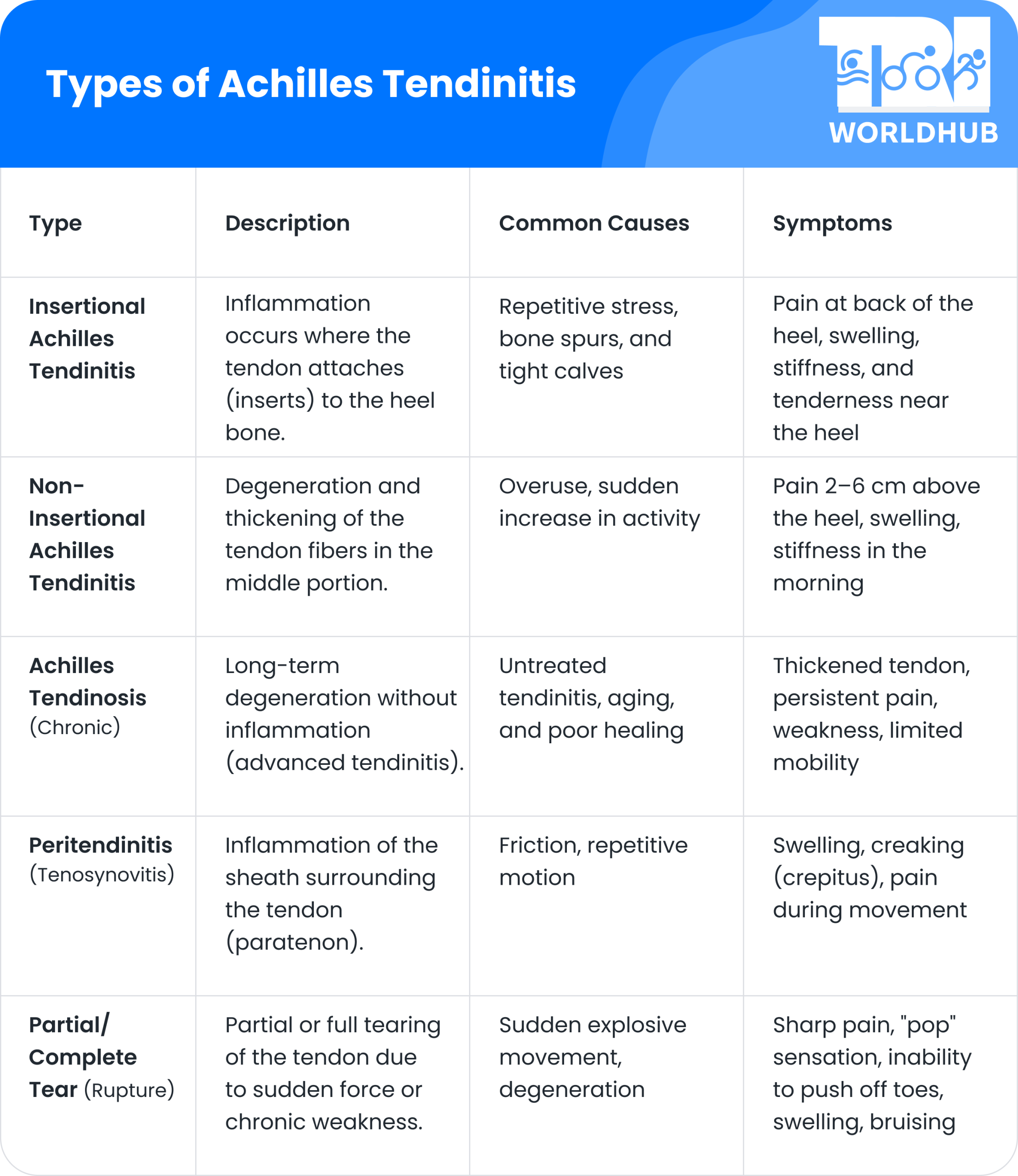
Key differences between types of Achilles tendonitis:
- Insertional affects the lower tendon near the heel.
- Non-insertional affects the mid-portion (more common in younger, active individuals).
- Tendinosis involves chronic degeneration (not just inflammation).
- Peritendinitis involves the outer sheath.
- Tears are acute injuries requiring immediate medical attention.
However, I strictly recommend avoiding self-treatment, and if you feel extreme pain, consult a professional physical therapist who can help diagnose and develop a personalized treatment plan for Achilles tendonitis.
Proper treatment, including stretching, mobility exercises, and strengthening moves, can help reduce pain and improve mobility in the affected leg.

Calf Muscles and Achilles Health
The calf muscles, especially the gastrocnemius, play a key role in supporting the Achilles tendon. When these muscles are weak or too tight, they can put extra strain on the tendon, increasing the risk of Achilles tendon injuries, like tendonitis or tendinopathy.
That’s why it’s important to keep your calf muscles strong and flexible. Regular exercises, such as calf raises or resistance band work, help build strength, while stretches like the standing calf stretch and seated calf raises improve flexibility. Together, these movements reduce stress on the Achilles tendon and support its function.
In addition to exercise, wearing proper, supportive footwear, such as running shoes, can make a significant difference. It helps absorb impact, reduces unnecessary strain, and further lowers the risk of injury to the tendon.
Further, I will be sharing some of my favorite exercises for the Achilles tendon. There will be both stretches and strength moves, like resistance band calf exercise and heel lifts for building strength, improving flexibility, and supporting tendon recovery.
7 Achilles Tendon Stretching Exercises
Here are seven effective Achilles tendon stretching exercises to help relieve pain, improve flexibility, and prevent injuries like Achilles tendinitis.
1. Standing Calf Stretch (Gastrocnemius Stretch)
Stand facing a wall, hands on the wall for support. Step one foot back, keeping the leg straight and heel pressed into the ground.
Bend the front knee slightly and lean forward until you feel a stretch in the calf. Hold for 30 seconds, then switch sides.
This exercise targets the upper calf muscle (gastrocnemius).
2. Seated Calf Stretch (Soleus Stretch)
Sit on the floor with legs extended. Loop a towel or resistance band around the ball of one foot.
Gently pull the toes toward you while keeping the knee slightly bent. Hold for 30 seconds, then switch sides.
This stretch focuses on the deeper calf muscle (soleus).
3. Heel Drop (Eccentric Calf Stretch)
To strengthen and lengthen the Achilles tendon, stand on a step or elevated surface with heels hanging off the edge. Rise onto toes with both feet, then shift weight to one leg.
Slowly lower the heel below the step level (controlled movement). Repeat 10-15 reps per leg.
4. Towel Stretch
Sit with your legs straight and wrap a towel around the ball of your foot.
Gently pull the towel toward you while keeping the knee straight. Hold for 30 seconds, then switch sides.
This is a great isolated stretch for the Achilles and plantar fascia.
5. Downward Dog (Yoga Stretch)
Start in a plank position, then lift your hips up into an inverted “V.” Press your heels toward the ground while keeping your knees slightly bent.
Hold for 20-30 seconds, breathing deeply.
This move stretches the calves, hamstrings, and Achilles tendons.
6. Runner’s Stretch (Lunge with Heel Down)
Step one foot forward into a lunge, back leg straight. Press the back heel into the ground and lean forward slightly.
Hold for 30 seconds, then switch sides.
It is a dynamic stretch for the Achilles and calves.
7. Foam Roller Calf Release
Sit with a foam roller under your calf. Cross one leg over the other for added pressure.
Roll slowly from the knee down to the Achilles, pausing on tight spots.
Continue for 30-60 seconds per leg.
This stretch releases tightness in the calf muscles and reduces tendon strain.
These exercises are great post-activity stretches. If you feel that the pain only worsens, it is better to consult a physical therapist. In case you are looking for more exercises, check out these stretches for cyclists.
For better results, combine these Achilles tendon stretches with strengthening exercises.
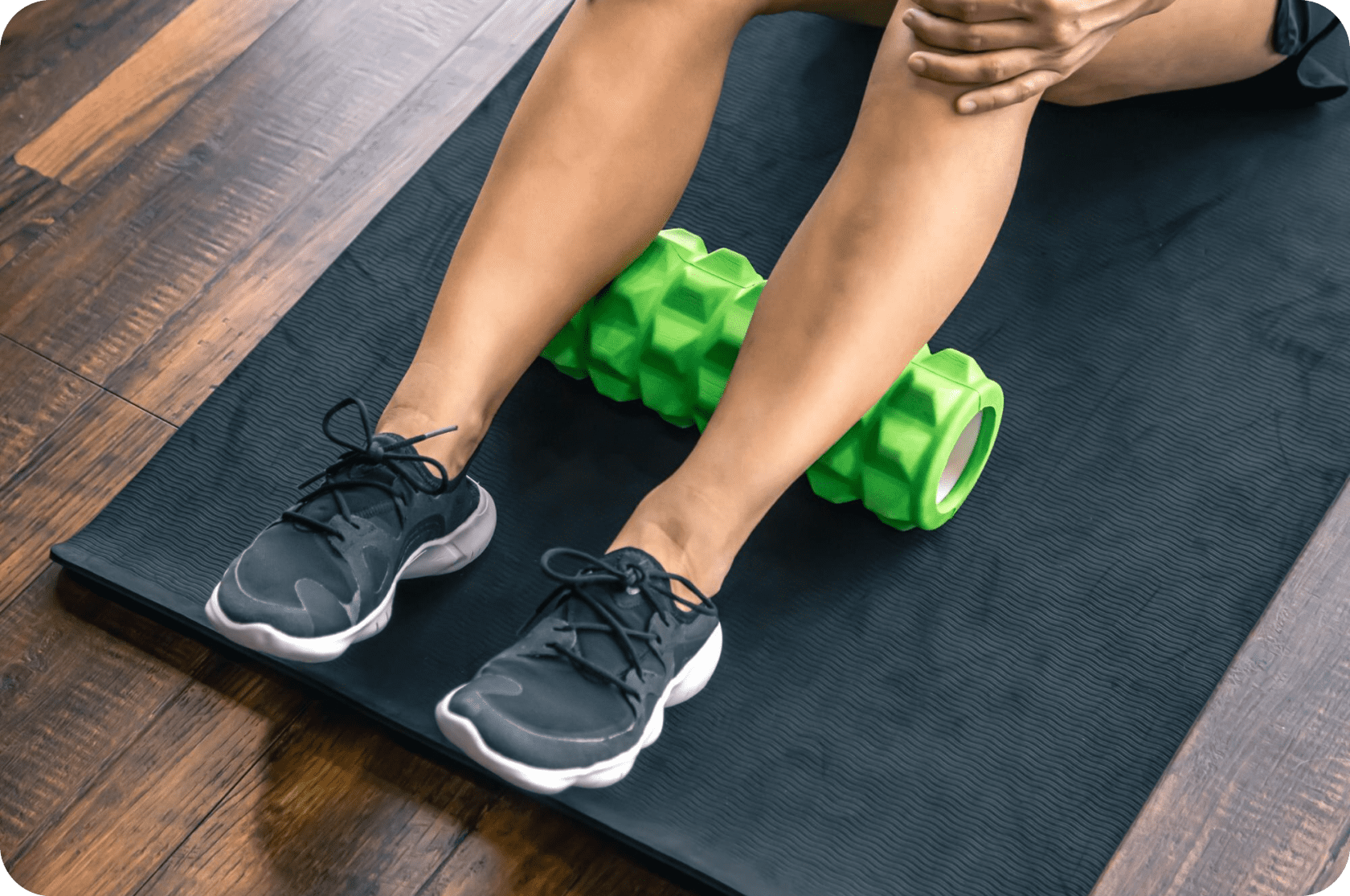
7 Strengthening Exercises for Achilles Tendon
These are some of the most effective strengthening exercises for the Achilles tendon to improve resilience, prevent injuries, and aid recovery. These exercises focus on eccentric loading, which is crucial for tendon healing.
1. Double-Leg Heel Raise
Stand on a flat surface (later progress to a step). Lift both heels off the ground, rising onto your toes.
Slowly lower back down with control. Do three sets of 10-15 reps. This exercise builds baseline calf strength.
2. Single-Leg Heel Raise
Stand on one leg near a wall for balance. Push up onto your toes, then lower slowly (3-5 seconds down). Perform three sets of 8-12 per leg.
3. Eccentric Heel Drop
Stand on a step with heels hanging off. Rise onto both toes, then shift weight to one foot.
Slowly lower the heel below step level (take 5 seconds). Use the other foot to return to the start. Perform three sets of 6-8 per leg. This exercise promotes tendon remodeling and reduces pain.
4. Seated Calf Raise
To strengthen the deep calf muscle, sit on a chair with feet flat, knees bent 90°. Place weights (e.g., dumbbells) on thighs for resistance.
Lift heels as high as possible, then lower slowly. Do three sets of 12-15 reps.
5. Resistance Band Ankle Flexion
Sit with legs straight, loop a band around the ball of your foot. Hold the band’s ends and point toes away, then pull back against resistance. Do three sets of 12-15 reps per foot. This move improves tendon elasticity and range of motion.
6. Toe Walks
Stand on your tiptoes and walk forward for 20-30 seconds. Keep movements controlled; avoid arch collapse. Repeat for three rounds. It is a great exercise for enhancing dynamic tendon and calf strength.
7. Jump Rope
Jump rope on a soft surface, landing lightly on the balls of your feet. Start with 30-second intervals, gradually increasing time. Do three to five sets, depending on your experience. Jump rope boosts tendon elasticity and explosive strength.
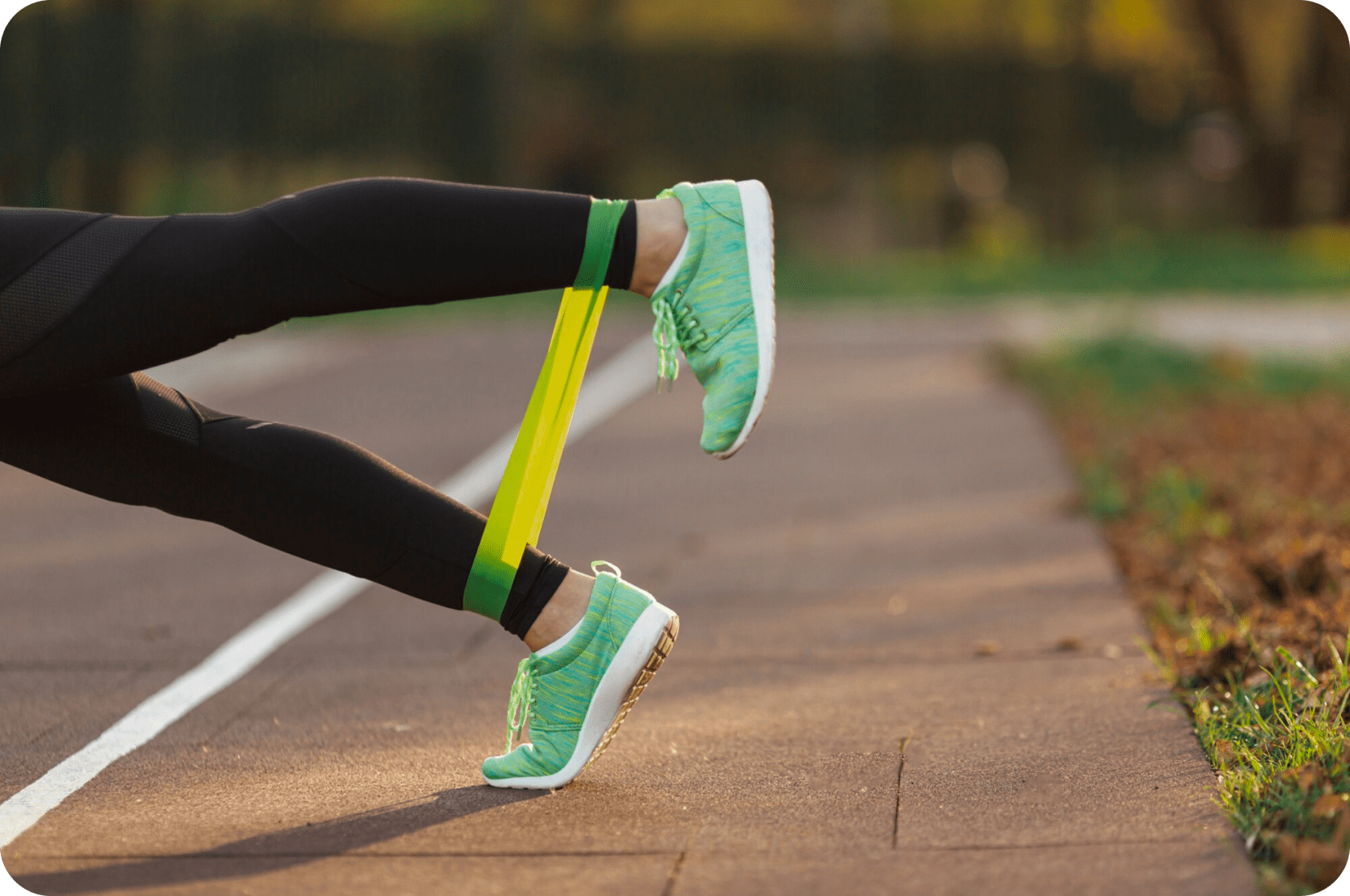
Key tips for safe strengthening
- Progress slowly and increase reps/weight only when pain-free.
- Prioritize control as eccentric (lowering) motions are most therapeutic.
- Warm up first, do light stretches or a 5-minute walk.
- Stop if sharp pain occurs. Mild discomfort is normal; sharp pain is not.
Wrapping up
Hopefully, this information was useful for you. As an athlete, you should always remember that stretching and strengthening the Achilles tendon are key to both recovery and prevention. Tight or weak muscles put extra stress on the tendon. This can lead to pain or injury over time.
Simple exercises I shared here, done regularly, can make a big difference. Stretching keeps the tendons flexible. And strengthening, in its turn, builds support around it, especially in the calf muscles.
If you’re dealing with severe tendon pain, exercises may not be enough. In this case, physical therapy can be more helpful. A therapist can guide you through safe, effective movements and track your progress.
The sooner you start, the better the results. With the right care, most people recover fully and get back to running, training, or simply walking without discomfort.



